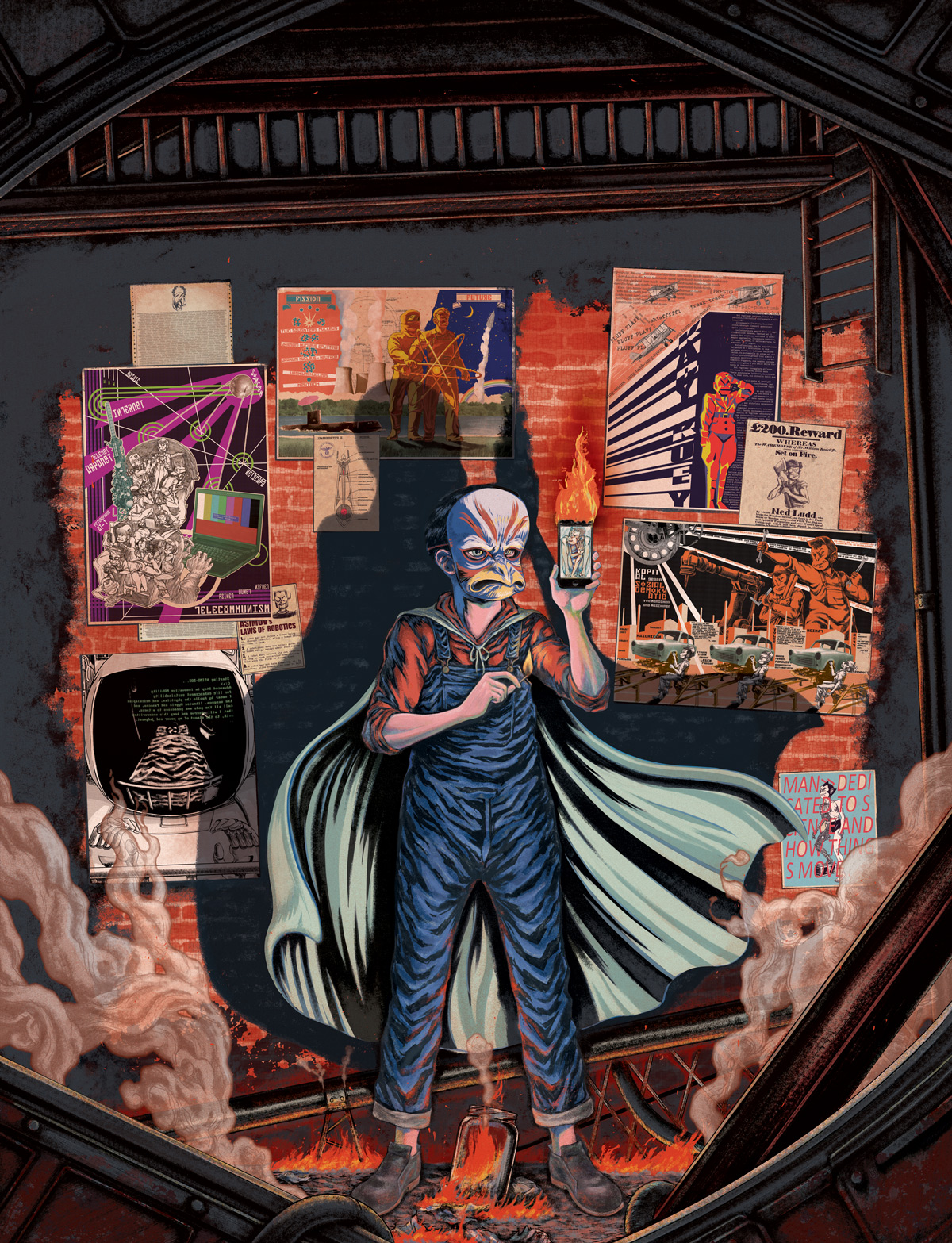
I met Italian artist Fabio Ramiro Rossin through email correspondence a year or two ago. When I saw this incredible piece he had done using GrutBrushes and found out that it existed in the real world as a 3X3 metre print hanging on the walls of the Museo Diffuso in Italy (and now it’s in the GrutBrushes Digital Art Gallery as well!) I had to know more, and asked Fabio if he would answer a few questions.
Nicolai: How long have you been working with digital drawing and painting?
Fabio Ramiro Rossin: I studied and began working as a 2d animator for serial productions since 2005, when I was 22; it was the time when 2d animation productions understood how much paper had become expensive.
Animation usually means teamwork, and I’ve always had the loner attitude; the only way to be a loner in the animation industry, is to evolve into a travelling one man band, and paper is a dispersive medium, nonetheless binding to a physical place.
So a couple of years later, I dropped pencil and paper and bought a tablet.
Then, in 2009, I submitted as an animator on a feature independent movie, and I met LRNZ, who reminded me that, as a kid, Katsuhiro Otomo and Leiji Matsumoto were my heroes, and I dreamt of telling stories, more than just draw; to draw was only the more satisfying way for me to tell stories.
Nicolai: Can you tell me how your work came to be part of the permanent collection in the Museo Diffuso in Torino?
Fabio Ramiro Rossin: Well, this piece isn’t exactly permanent, or, at least, not yet. Anyhow, the Pole of 900 Foundation, the Department of culture, and the University of Turin had this project on the table, about melting the Historical and Literature Archives and the Museum of the 20h century, developing a more interactive and playable space for citizens and students to live and learn. So, they have chosen 5 main subjects ( mine being Man and Machines,), and commissioned 5 different authors (one of them being LRNZ, to my final surprise) to create an illustration to print on canvas, 3x3mt size. They (paid us, and) said we could keep the canvas, but I suspect none of the authors will have enough space to hang its own in the living room or store it in the garage. I guess they will place them in the library, after the inaugural exhibition closure. So they will become permanently collected in the Museum. Sort of.
Nicolai: This is a huge print, at 3 X 3 metres. It’s very unusual for a digital painting to be seen this large in the ‘real world’ How well did your digital painting translate into a physical print and were there any special challenges?
Fabio Ramiro Rossin: Strokes came out so vivid that a friend of mine (illustrator), asked me if I had painted it analogically on a separate canvas, and then scanned them.
Mainly, the real credit must go to the scenographers of the Regio Theater of Turin, they have done a fabulous job, but I felt proud as Caravaggio when, somehow, someone, told me I had nailed and scored the result.
I have to admit a thing: being my first digital work on such scale, I spent a month, nights and days trying to manage the brushes and textures 1:1 scale, 300 dpi.
Since the beginning, I thought to treat the whole composition as a theatrical background wing ( the museum environment is very post-industrial: nude red bricks and iron transepts). I imagined physically attaching the posters on the background a second time, after printing the canvas.
This intervention was revealed to be unobtainable, due to the conservation restrictions imposed by the scenographers (lights melt glue), but the projectual settings revealed to be a real deal when I had to face the frequent crashes of my lenovo tablet OS (still a little powerhouse, considering the 2 gigas size of the file ), and allowed me to draw those posters on separate files.

Nicolai: Other than to work at a high resolution, what one piece of advice would you give to people who want to paint digitally for large format printing?
I speak to you, young painter and neophyte: Grut’s digital brushes wouldn’t exist if Nicolai hadn’t familiarity and deep knowledge of the classical painting techniques. Some day, apocalypse will come and internet will break, but more easily, you could find yourself next to a deadline with your computer malfunctioning and no money to buy another, or just an electricity breakdown in August and no friends in town, so you better know how to translate your imagination with Crayolas on paper.
